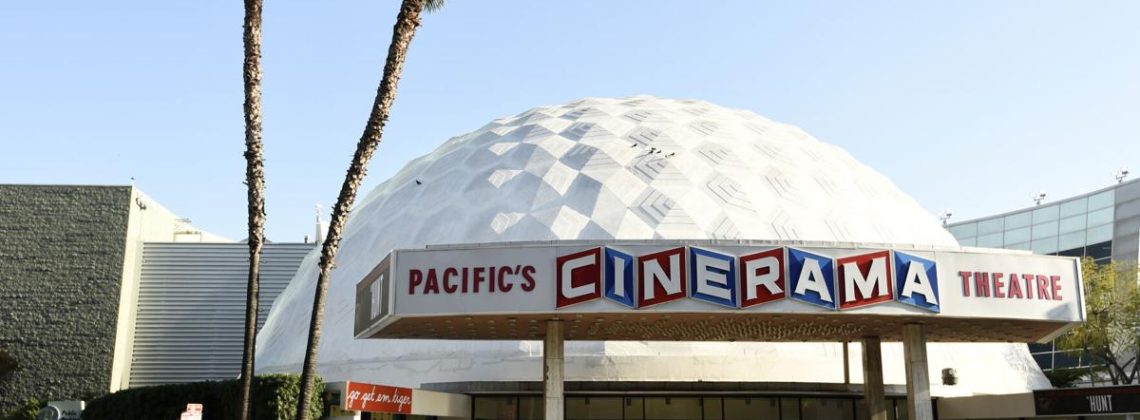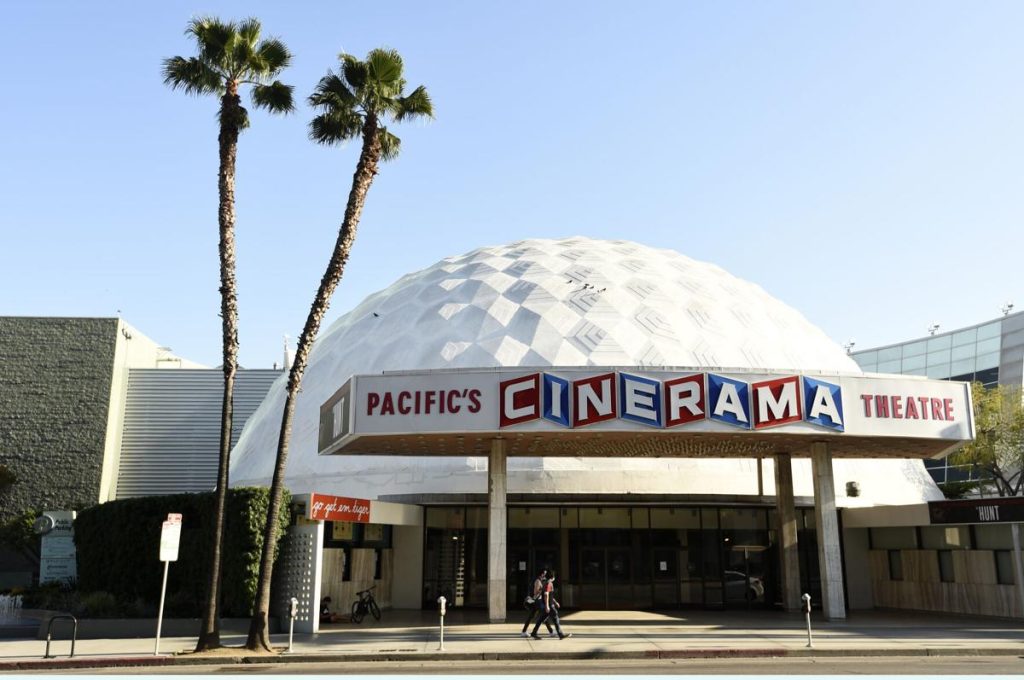

Streaming services have helped us through the pandemic. But when it comes to film, the way forward may be the way back.
In college I worked part-time as a projectionist at a ten-screen cineplex in my small Georgia hometown. This was from 2009 to 2012, right at the time when traditional 35mm film projection was being eclipsed by digital projection.
When I started—incidentally, the year Quentin Tarantino released Inglourious Basterds, a (blood-soaked) love letter to film, projection, and cinema—there was one digital projector in the booth. The other nine screens had platter projectors that needed to be manually threaded before each show. Except for the digital movie, which came to us on a hard drive, the films and trailers arrived on separate reels, typically four to six of them, and had to be “built”—spliced together into one long reel—and transferred very carefully onto the platter. (I dropped one once. I don’t like to talk about it.)
Thursday nights were building nights; those mid-week early screenings meant to inflate the weekend box-office numbers weren’t yet commonplace, at least at our location. And building nights were long, late nights. I won’t lie: There were times—alone in a dark booth at one or two or three AM on a Friday morning, scrambling to get the last of the new movies built and onto the projectors—when I was really looking forward to the coming digital revolution.
By the time I left that job in 2012—and admittedly this process was slower for us at a family-owned Georgia chain—the revolution was pretty much over. All ten screens had digital projectors. The projectionist’s responsibilities in the booth had dwindled to loading hard drives onto the LMS (Library Management System) and dragging and dropping feature, trailer, and cue files into what was essentially a playlist.
Fast forward a couple of more years. There was no projectionist in the booth anymore. All the shows could be assembled and controlled from a computer in the manager’s office downstairs. The only time anybody actually needed to enter the booth, which was by now doubling as an excess storage room, was to change a light bulb on a projector or wipe off the lenses. Meanwhile, Regal Cinemas had bought out the location; it was now part of the second-largest national theater chain.
Shortsightedly, I assumed these were the most drastic changes traditional cinema would undergo in my lifetime: all-digital projection and the swallowing up of local chains by huge national ones.
A couple of more years passed. This is roughly the progression as I remember it: Netflix read the portents and transformed itself from a humble DVD rental service into the leading digital streaming service, making new, high budget, high quality content available to subscribers in the comfort of their homes—no box-office lines, no outrageous concession prices, no disruptions of the viewing experience. Other streaming services quickly followed.
The big cinema chains attempted to keep up by introducing their own subscription-based ticketing plans or by partnering with third-party services like the now defunct MoviePass, which allowed members to see multiple movies for one flat monthly fee. And the whole time a conversation that had been a background murmur for years was moving to the foreground, getting louder and louder: We had Netflix now, and Hulu, and Disney Plus. Movie-theater prices were so steep. The major studios were just churning out the same stale, rehashed content anyway. Did we even still need the cineplex anymore? What purpose did it serve, really? Wasn’t the model as we knew it obsolete?
And then the pandemic, which seemed to answer all of those questions.
I was pulling together this piece when the news broke that ArcLight Cinemas and Pacific Theatres, two California fixtures, are closing permanently, just as we start to see light at the end of the COVID-19 tunnel. It shook me. Through the pandemic, I’ve clung to my belief that there will always be movie theaters. That there will always be enough people who love cinema and film culture, who love moviegoing as an event and an experience—the atmosphere, the thrill of midnight screenings and big summer tentpole releases, the joy of being able to say, “I saw that on the big screen when it first came out!” And ArcLight’s model was the model that seemed most viable in a post-COVID world, enticing moviegoers with upscale amenities, special events, and exclusive screenings—not only of new releases but of classics too. But if the ArcLight in LA can’t stay open, what hope is there for the small-town cineplex, or even places like the Alamo Drafthouse?
And yet I still believe there is a place for the cineplex. Ironically, the pandemic has driven that home.
This is a moment of reckoning to be sure, and there are so many questions without easy answers: How do we make movies accessible and not cost prohibitive, whether in cinemas or on streaming services? How do we make sure marginalized filmmakers and innovators are getting the opportunities and platforms they need to reach new audiences? But moviegoing has never been just about what’s playing on the screen. It’s also about community and shared experience and memory making—none of which are streamable on Netflix.
Amanda McCrina is a Nashville-based writer of historical fiction, including the WWII thrillers Traitor and The Silent Unseen.
Amanda McCrina is a Nashville-based writer of historical fiction. Her novels Traitor and The Silent Unseen explore tensions between the Ukrainian nationalist movement and the Polish government before and during World War II. Find her on Twitter at @amandamccrina.